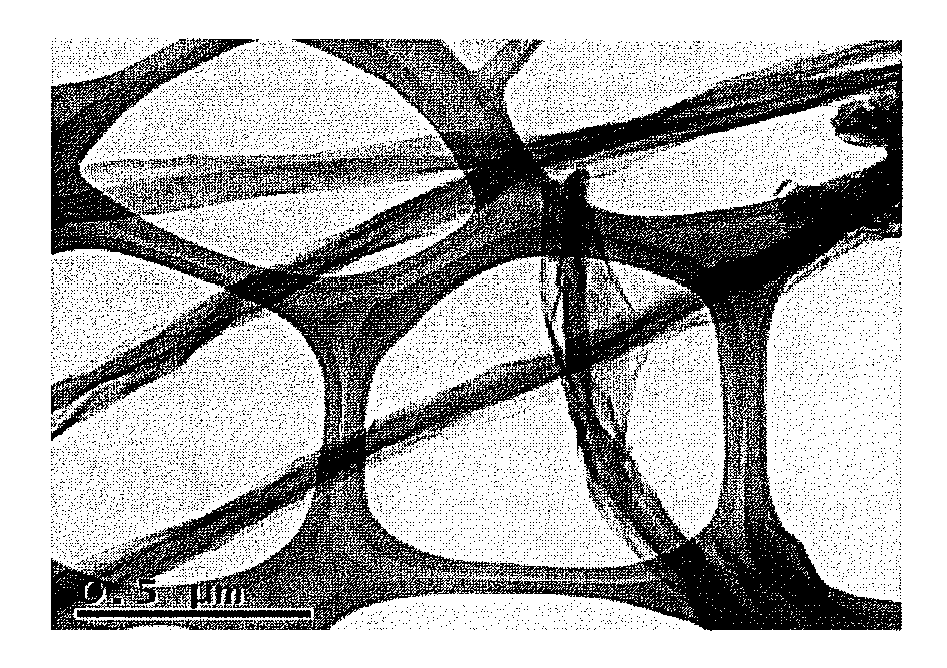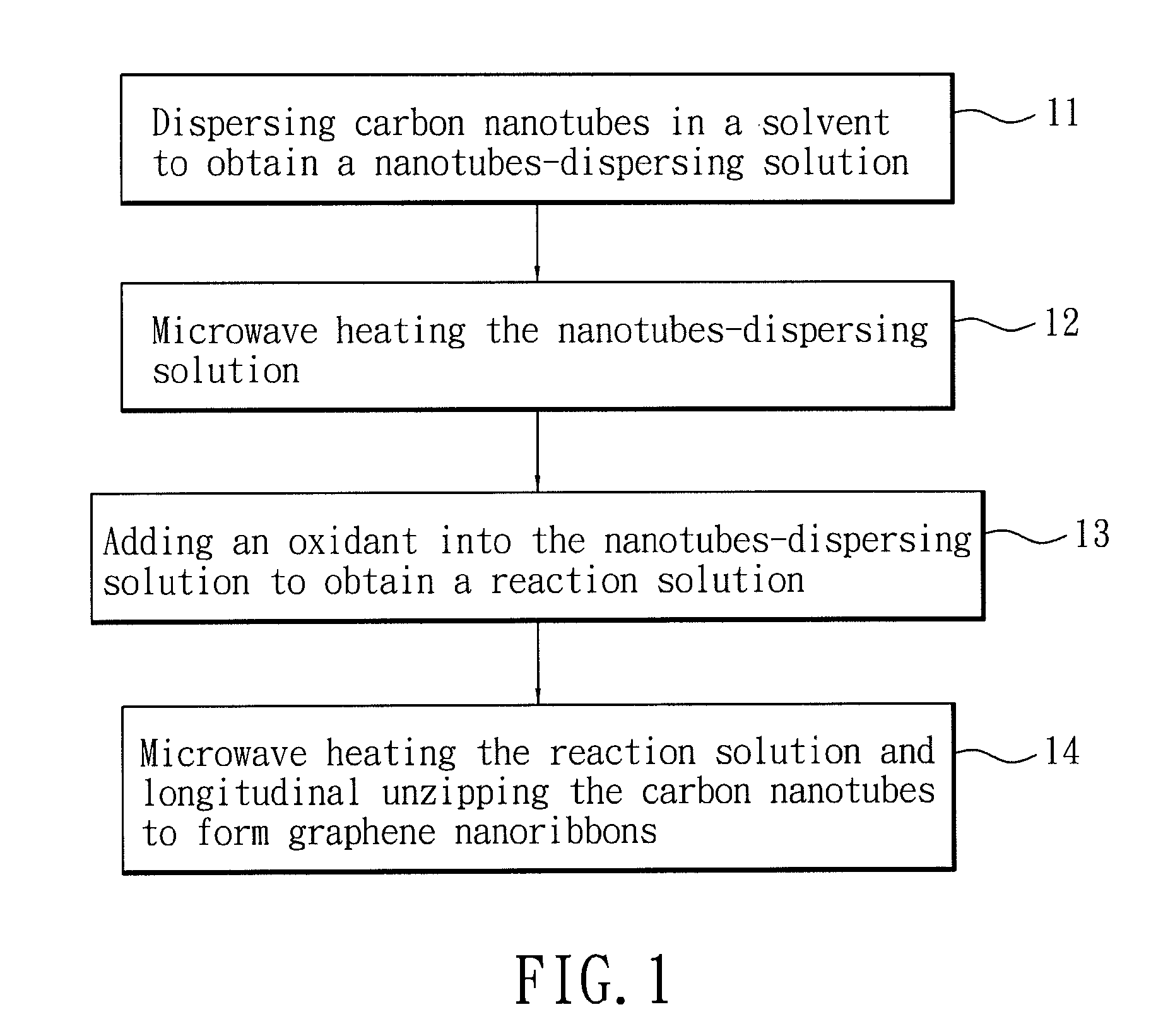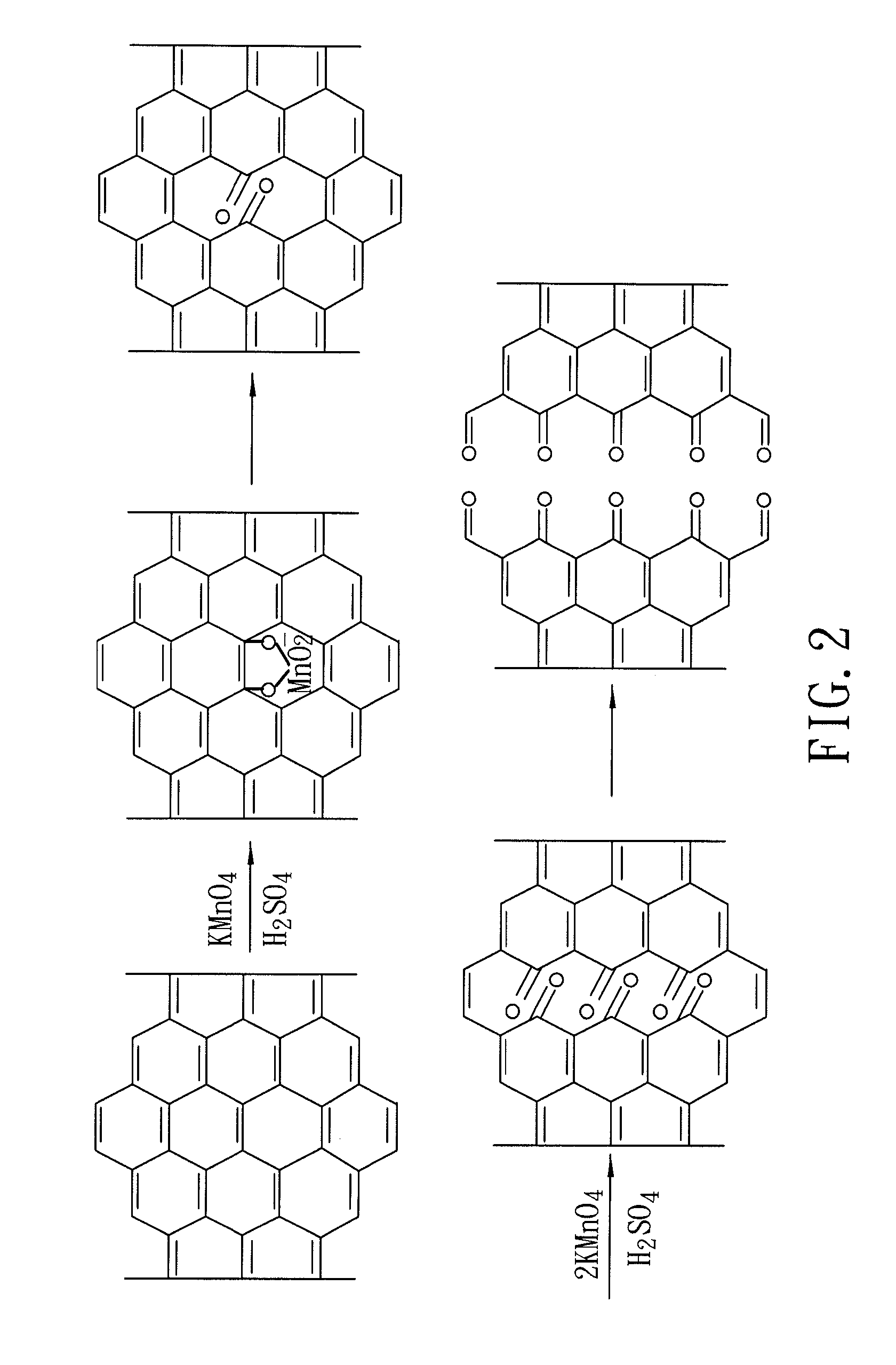Method for forming graphene nanoribbons
- Summary
- Abstract
- Description
- Claims
- Application Information
AI Technical Summary
Benefits of technology
Problems solved by technology
Method used
Image
Examples
example 1
[0036]45 ml of sulfuric acid solution was mixed with 5 ml of phosphoric acid to obtain an acidic aqueous solution. 0.05 g of multi-walled carbon nanotubes as shown in FIG. 3 was added into the acidic aqueous solution followed by stirring at room temperature for about 1 hour to obtain a nanotube-dispersing solution. Thereafter, the nanotube-dispersing solution was heated by microwave at a microwave power of 200 watts for 2 minutes to conduct surface modification of the carbon nanotubes.
[0037]Next, 0.25 g of potassium permanganate was added into the nanotube-dispersing solution followed by stirring at room temperature for about 30 minutes to obtain a reaction solution. The reaction solution was heated by microwave at a microwave power of 150 watts for 4 minutes to maintain the reaction temperature at about 65° C. The reaction solution was filtered using a filter and an aspirator. The powders on the filter were scraped off and dried to obtain graphene nanoribbons.
examples 2 and 3
[0038]The steps in Examples 2 and 3 were similar to those in Example 1 except that the reaction solution was heated by microwave at a microwave power of 200 watts and 250 watts, respectively.
[0039]FIGS. 4 to 6 are transmission electron microscopy photographs showing the graphene nanoribbons obtained from Examples 1 to 3.
[0040]From the transmission electron microscopy in FIGS. 4 to 6, it is revealed that, when the microwave heating step of the present invention is carried out at a microwave power ranging from 150 watts to 250 watts, the carbon nanotubes can be unzipped to obtain the graphene nanoribbons, and only 4 minutes are required to unzip the carbon nanotubes.
[0041]As shown in FIGS. 7, L-1 to L-5 represent respectively the Raman spectrum of multi-walled carbon nanotubes, the Raman spectrum of standard graphene nanoribbons, and the Raman spectra of the graphene nanoribbons obtained from Examples 1 to 3.
[0042]The peak D (D band) at 1360 cm−1 represents the existing of amorphous c...
PUM
 Login to View More
Login to View More Abstract
Description
Claims
Application Information
 Login to View More
Login to View More - R&D
- Intellectual Property
- Life Sciences
- Materials
- Tech Scout
- Unparalleled Data Quality
- Higher Quality Content
- 60% Fewer Hallucinations
Browse by: Latest US Patents, China's latest patents, Technical Efficacy Thesaurus, Application Domain, Technology Topic, Popular Technical Reports.
© 2025 PatSnap. All rights reserved.Legal|Privacy policy|Modern Slavery Act Transparency Statement|Sitemap|About US| Contact US: help@patsnap.com



